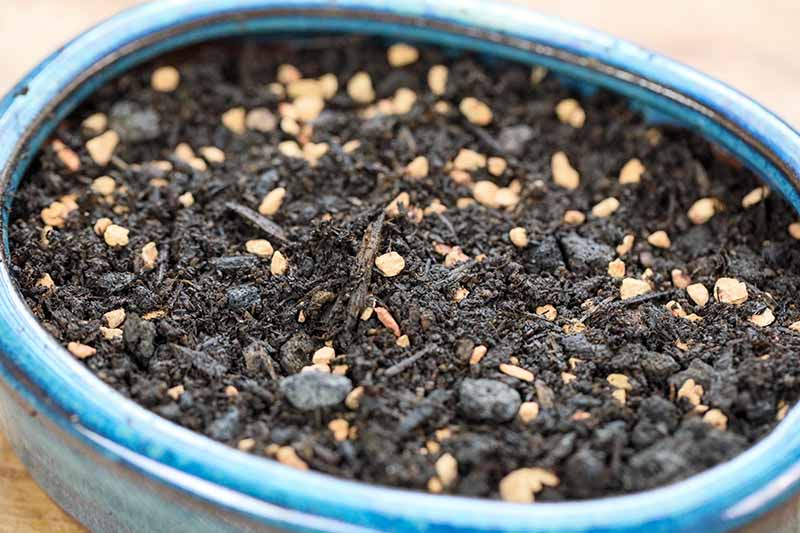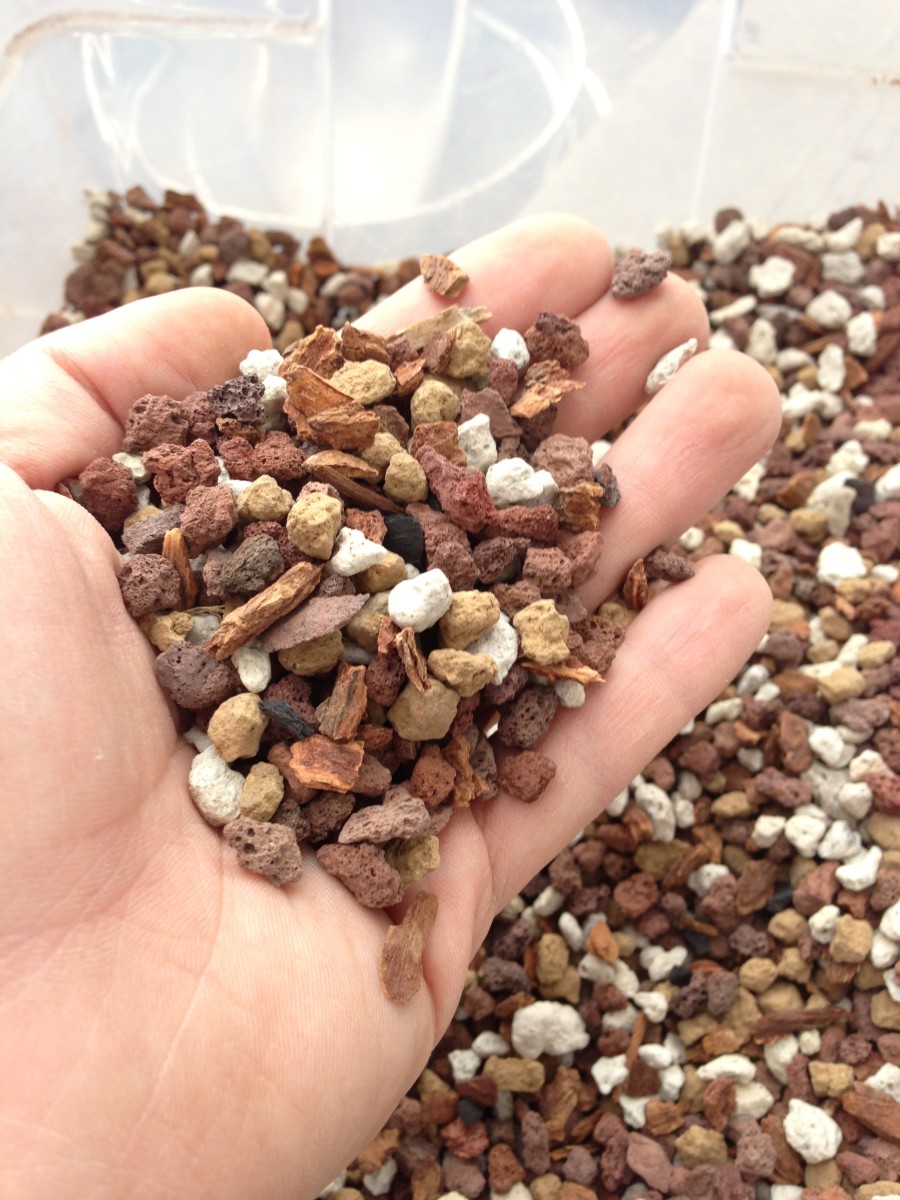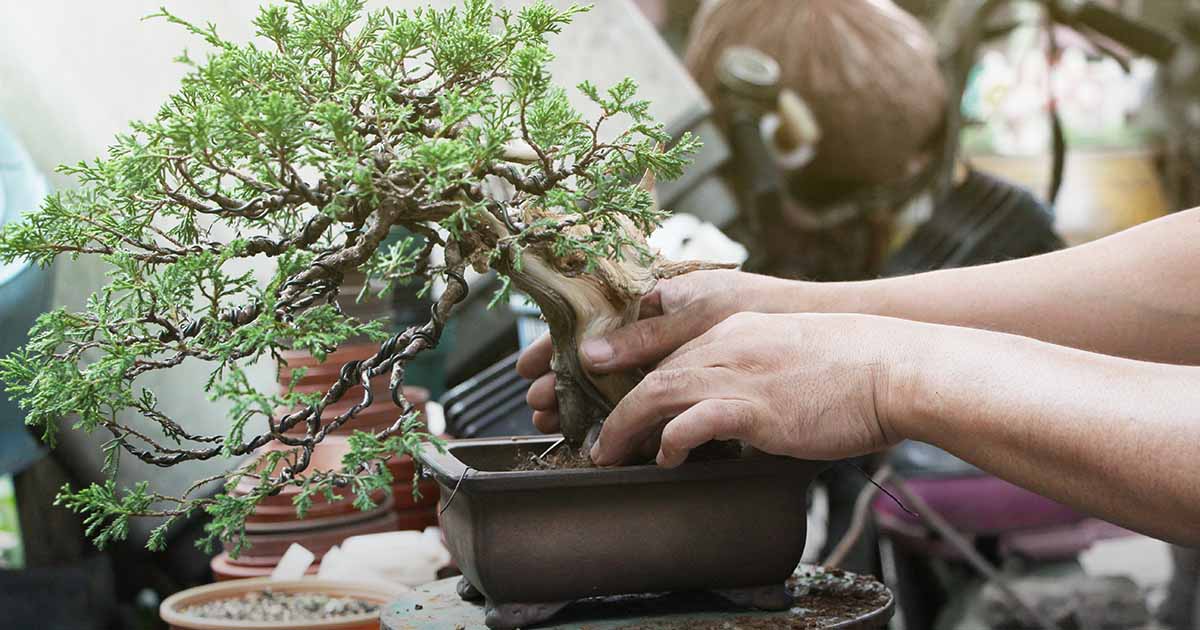On this page, we'll investigate the different types of soil and substrates Utilized in bonsai cultivation, like organic and inorganic options.
We are going to also discover encouraged soil mixtures for various bonsai species, for instance deciduous, coniferous, and indoor kinds. From akadama and pumice to moss and river sand, we are going to dive in to the interesting entire world of bonsai soil and assist you realize why It truly is a vital A part of cultivating these exquisite trees.

Bonsai soil
What is bonsai soil?
Bonsai soil is a specialized type of soil that is specifically formulated for growing and maintaining bonsai trees. Unlike regular garden soil, bonsai soil is well-draining and provides the necessary nutrients and moisture balance for the tree's root system. The composition of bonsai soil is carefully designed to meet the unique needs of bonsai trees, ensuring their health and longevity.
The importance of bonsai soil
The choice of soil plays a crucial role in the success of your bonsai tree. The right soil provides optimal drainage, allowing excess water to flow freely and preventing root rot. It also promotes a healthy and well-developed root system, which is essential for the overall health and growth of the tree. Bonsai soil retains moisture while allowing air to reach the roots, striking the perfect balance for the tree's needs. Choosing the right bonsai soil is essential for maintaining a healthy and thriving bonsai tree.
Bonsai substrates
What are bonsai substrates?
Bonsai substrates refer to the different materials that can be used to create the ideal soil composition for bonsai trees. These substrates are carefully chosen to meet the specific needs of different species of bonsai trees and to ensure proper water drainage and nutrient availability.
Different types of bonsai substrates
There are various types of bonsai substrates available, each with its own unique characteristics and benefits. Some common bonsai substrates include:
- Organic materials: These include ingredients such as bark, peat moss, and coconut coir. Organic substrates help retain moisture and provide essential nutrients to the bonsai tree.
- Inorganic supplies: These consist of components like pumice, lava rock, and akadama. Inorganic substrates give fantastic drainage, guaranteeing that extra h2o will not accumulate throughout the roots in the bonsai tree.
- Soil amendments: They are substances that happen to be included for the soil combination to boost its Attributes. Samples of soil amendments involve perlite, vermiculite, and sand. They Enhance the soil's aeration, water-holding capability, and nutrient availability.
By comprehending the differing types of bonsai substrates and their Attributes, you may select the most suitable 1 in your bonsai tree's demands.
Natural and organic or Inorganic Soils
Natural and organic soils for bonsai
Organic and natural soils for bonsai are composed of natural products for example bark, peat moss, coconut coir, and compost. These supplies supply a abundant source of nutrients for your bonsai tree and market healthy root enhancement. Organic soils also have good water retention Qualities, making certain which the tree gets suitable dampness concerning watering sessions. On the other hand, it is vital to note that natural soils may well stop working with time and develop into compacted, bringing about poor drainage and possible root concerns.
Inorganic soils for bonsai
Inorganic soils for bonsai encompass supplies like pumice, lava rock, akadama, and soil amendments like perlite or vermiculite. These elements have excellent drainage Qualities, preventing waterlogged soil and selling aeration within the roots. Inorganic soils are most well-liked by quite a few bonsai fans because of their longevity and skill to offer a secure surroundings for your bonsai tree's root program. Nevertheless, they may need far more Recurrent watering and extra fertilization, as they do not maintain as much humidity or nutrients as organic soils.
Advantages and disadvantages of applying organic and inorganic soils for bonsai
Choosing involving natural and inorganic soils to your bonsai tree depends on many elements, including the unique species of tree, your climate, and private Tastes. Here's the benefits and drawbacks of each:
Organic and natural soils:
- Execs: Provide nutrients, good h2o retention, market healthier root improvement.
- Drawbacks: May perhaps break down after some time, likely for bad drainage Otherwise thoroughly preserved.
Inorganic soils:
- Professionals: Fantastic drainage, extended-lasting, steady atmosphere for roots.
- Disadvantages: A lot less h2o retention, might demand extra Regular watering and fertilization.
By thinking about the pluses and minuses of equally organic and inorganic soils, you can also make an knowledgeable conclusion based on the specific desires of the bonsai tree.
Soil components
Important parts of bonsai soil
Bonsai soil is usually composed of three most important factors: grit, organic and natural issue, and clay. These components do the job with each other to produce The perfect soil structure for the bonsai tree's root procedure.
- Grit: Grit, such as sand or perlite, gives drainage and aeration inside the soil. It helps stop waterlogging and permits air to reach the roots.
- Organic and natural make any difference: Natural and organic make any difference, like compost or bark, supplies nutrients into the bonsai tree. In addition, it can help keep dampness and Enhance the soil's Over-all construction.
- Clay: Clay particles supply some drinking water retention attributes and assistance bind the soil alongside one another. On the other hand, an excessive amount of clay may lead to bad drainage and compaction.
Part of every soil part
Each individual soil component performs an important part in creating a properly-balanced and healthy environment for the bonsai tree's roots.
- Grit: Grit provides the mandatory drainage and aeration inside the soil. It prevents the roots from sitting down in stagnant h2o, minimizing the risk of root rot and promoting In general root overall health.
- Organic make any difference: Natural matter provides necessary nutrients towards the bonsai tree. It aids in moisture retention and contributes to the general construction of the soil.
- Clay: Clay particles enable bind the soil jointly and provide some water retention potential. On the other hand, it is important to balance the level of clay in order to avoid challenges like weak drainage and compaction.
By knowing the roles of each soil element, you'll be able to make a balanced bonsai soil combine that fulfills the particular requirements within your tree.

Recommended Bonsai soil mixtures
Common bonsai soil mixtures
There are several common bonsai soil mixtures that have been proven effective for various types of bonsai trees. These mixtures typically consist of a combination of inorganic substrates, organic matter, and soil amendments.
Some of the commonly used bonsai soil mixtures include:
- Akadama, pumice, and lava rock: This mixture is popular among bonsai enthusiasts for its excellent drainage and water retention properties.
- Akadama, lava rock, and organic and natural make any difference: This mixture combines the key benefits of inorganic substrates With all the nutrient-rich Qualities of natural and organic subject.
- Pumice, perlite, and bark: This combination delivers excellent drainage and aeration though retaining some dampness and supplying nutrients.
These are just a few examples of bonsai soil mixtures, and The perfect combination will rely on the precise wants within your bonsai tree plus your local climate.
Factors to take into consideration when selecting a bonsai soil mixture
When deciding upon a bonsai soil mixture, it is vital to look at the subsequent aspects:
- Species of bonsai tree: Different species have different dampness and nutrient necessities. Investigate the precise wants within your tree to choose a soil mixture that satisfies its specifications.
- Weather: The climate you reside in can have an effect on the moisture retention Qualities of the soil. Take into account the typical humidity and temperature close to you When picking a soil combination.
- Watering practices: Your own watering behaviors and plan should really align Along with the soil mixture you end up picking. Some mixtures call for extra Recurrent watering, while others keep humidity for extended periods.
- Finances: Some soil components might be costlier than others. Contemplate your finances when selecting a soil combination.
By using these variables under consideration, you can pick a bonsai soil mixture that gives the best expanding ailments for your personal tree.
Deciduous Bonsai soil
Greatest soil composition for deciduous bonsai
Deciduous bonsai trees, for instance maple or birch, have specific soil needs to assist their advancement and health. The ideal soil composition for deciduous bonsai generally features a combination of organic make a difference, inorganic substrates, and soil amendments.
A advised soil composition for deciduous bonsai could incorporate:
- Akadama: Provides great drinking water retention even though allowing for for drainage. Furthermore, it releases nutrients slowly eventually.
- Pumice: Promotes aeration and drainage while in the soil, avoiding waterlogging.
- Bark or peat moss: Provides organic and natural matter to the soil, supplying nutrients and humidity retention.
This soil composition ensures that the roots of deciduous bonsai trees obtain the best balance of humidity, nutrients, and oxygen for optimum progress.

Coniferous and Pine soil
Ideal soil mixture for coniferous and pine bonsai
Coniferous and pine bonsai trees have specific soil requirements due to their water retention needs and preference for acidic soil. An ideal soil mixture for coniferous and pine bonsai should provide good drainage while retaining moisture and maintaining the desired pH level.
A recommended soil mixture for coniferous and pine bonsai may include:
- Akadama: Provides excellent water retention while allowing for sufficient drainage. It releases nutrients slowly over time.
- Pumice: Promotes aeration and drainage in the soil, preventing waterlogged roots.
- Peat moss: Provides natural and organic issue and acidity towards the soil, producing a really perfect pH level for coniferous and pine trees.
This soil mixture makes certain that the roots of coniferous and pine bonsai trees get the ideal balance of humidity, nutrients, and acidity for their precise requires.
Akadama
Precisely what is akadama?
Akadama is really a form of clay soil that is definitely widely Employed in bonsai cultivation. It truly is known for its outstanding drinking water retention Homes, which ensure a gentle provide of dampness for the bonsai tree's roots. Akadama is additionally prized for its capability to launch nutrients slowly and gradually after some time, furnishing a steady supply of nourishment for your tree.
Benefits of applying akadama in bonsai soil
Employing akadama in bonsai soil gives a number of Gains:
- Drinking water retention: Akadama has Excellent water retention properties, allowing for it to hold moisture devoid of turning out to be waterlogged. This ensures that the bonsai tree's roots get a regular source of water, advertising and marketing balanced progress.
- Nutrient release: Akadama gradually releases nutrients into your soil after some time, delivering a constant supply of nourishment to the bonsai tree. This reduces the necessity for Regular fertilization and allows keep a balanced nutrient profile.
- Aeration: Irrespective of its drinking water retention abilities, akadama also offers suitable aeration on the bonsai tree's roots. It allows air to get to the root method, blocking concerns which include root rot as a consequence of deficiency of oxygen.
By incorporating akadama in to the bonsai soil, you could generate an optimal increasing atmosphere in your tree, ensuring its wellbeing and vitality.

Lava rock
How lava rock benefits bonsai soil
Lava rock is a popular component in bonsai soil mixtures due to its excellent drainage and aeration properties. It is typically used in conjunction with other substrates to create the ideal soil composition for bonsai trees.
The benefits of lava rock in bonsai soil include:
- Drainage: Lava rock provides excellent drainage, preventing waterlogging and ensuring that excess water flows freely through the soil. This helps prevent root rot and provides a healthy environment for the roots to thrive.
- Aeration: The porous nature of lava rock lets air to circulate in the soil, furnishing oxygen for the bonsai tree's root procedure. Appropriate aeration is important for wholesome root progress and General tree expansion.
- Longevity: Lava rock is a long lasting material that doesn't stop working very easily. This makes certain that the soil structure stays secure as time passes, minimizing the necessity for Recurrent soil replacements.
Lava rock is out there in several dimensions and shapes, making it possible for for personalisation according to the precise demands of your respective bonsai tree and soil specifications.
Differing kinds of lava rock
You will find differing types of lava rock that could be used in bonsai soil mixtures, such as:
- Black lava rock: Black lava rock can be a usually utilized content in bonsai soil mixtures. It offers fantastic drainage properties and adds an aesthetic component to the overall presentation of your bonsai tree.
- Red lava rock: Red lava rock is yet another popular selection in bonsai soil mixtures. It provides very similar drainage and aeration benefits as black lava rock but has a distinct reddish colour that adds visual fascination to your container.
Both black and purple lava rocks are commonly out there and can be effortlessly integrated into your bonsai soil mixture.
Potting
Vital tricks for thriving bonsai potting
Potting is a crucial method in bonsai cultivation, because it right impacts the wellbeing and progress of your tree's roots. Below are a few essential tips for effective bonsai potting:
- Choose the correct pot dimension: Decide on a bonsai pot that allows for root growth while still providing a snug fit. Avoid pots which are too massive, since they can result in abnormal soil dampness and lousy root development.
- Use bonsai wire: Secure the tree in the pot employing bonsai wire to make certain stability. This helps prevent the tree from shifting or getting uprooted during watering or solid winds.
- Trim and unfold the roots: Ahead of potting the bonsai tree, cautiously trim and unfold out the roots. This encourages outward expansion and helps prevent root tangling or root-bound problems.
- Increase mesh screens: Place mesh screens more than the drainage holes at the bottom of the pot to forestall soil erosion and make certain correct drainage.
- Use refreshing bonsai soil: When potting, constantly use fresh new bonsai soil to provide the mandatory nutrients and best developing disorders for your roots.
By subsequent these important tips, you'll be able to guarantee a successful potting process and endorse the overall wellbeing and growth within your bonsai tree.
The job of bonsai pots in soil moisture control
Bonsai pots Participate in a vital function in soil humidity Management, directly impacting the health and growth of the tree. Bonsai pots are generally shallow and check here also have drainage holes, allowing surplus water to flee and avoiding the soil from turning into waterlogged.
The design of bonsai pots encourages evaporation and air circulation, which can help regulate soil humidity amounts. The shallow depth and check here wide opening on the pot expose much more area spot from the soil into the air, aiding in dampness evaporation. This prevents the roots from sitting down in excessively damp soil, lowering the potential risk of root rot as well as other h2o-connected issues.
Moreover, the drainage holes in bonsai pots permit any excess drinking water to escape, blocking waterlogged soil and advertising and marketing aeration throughout the roots. Good aeration is essential for the wellbeing and advancement of the foundation program, making sure the bonsai tree receives the mandatory oxygen for development.
Through the use of bonsai pots made for efficient humidity Management, you'll be able to produce a positive atmosphere in your bonsai tree's roots and promote its Total well being and vitality.
In summary, deciding on the right bonsai soil is significant to the achievements and wellness of your bonsai tree. Knowledge the different types of bonsai substrates, the position of natural and organic and inorganic soils, The true secret parts of bonsai soil, and the various encouraged soil mixtures will assist you to offer the best growing situations for your bonsai tree. Irrespective of whether you have a deciduous or coniferous bonsai, incorporating supplies like akadama and lava rock can greatly enhance the soil's drainage and nutrient availability. On top of that, taking note of potting tactics and utilizing bonsai pots suitable for dampness Regulate will further assistance the flourishing advancement of one's bonsai tree. With suitable knowledge and implementation of bonsai soil practices, you'll be able to take pleasure in the natural beauty and artistry of bonsai cultivation for years to come.
